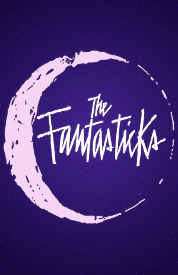
From Broadway To 52nd Street
The Fantasticks opened it season of 418 performances at the Sullivan Theatre on May 3, 1960. The musical starred Jerry Orbach, Rita Gardner, Kenneth Nelson and Tom Jones performing music composed and written by Harvey Schmidt and Tom Jones. Most notably from the show came one tune that would inevitably land in the jazz annals of music – Try To Remember.
The Story: The parents of the boy Matt, and the girl Louisa build a wall between their homes not because of any real animosity but on the assumption that the best way to kindle a romance is to appear to oppose it. They even hire El Gallo to stage a mock rape so Matt can rescue Louisa and seemingly be the hero. The kids discover the parent’s ploy, fall out and go separate ways. Eventually, they return to each other, disillusioned but mature.
Jazz History: In the late 60s, jazz began to feel the full impact of the rock revolution. Important jazz venues shut their doors, major labels abandoned jazz to pursue rock, and many jazz artists left the country for better opportunities abroad. Jazz record sales plummeted as rock sales soared, and younger audiences increasingly chose the Beatles, Jimi Hendrix, or the politically oriented folk music of Bob Dylan over jazz. New hybrids of rock and jazz developed as a result, some fueled by jazz players interested in rock and funk, others by rockers interested in jazz. A few late-60s jazz-rock acts like Blood, Sweat, and Tears and Chicago made inroads onto the pop charts, and some youth culture-oriented jazz artists like Charles Lloyd and Gary Burton scored with rock audiences. Numerous late-60s rockers, including Jimi Hendrix, Eric Clapton, Duane Allman, and many San Francisco bands, also began to extend their solos based on the modal improvisations of John Coltrane and other free jazz innovators.
Sponsored By
www.whatissuitetabu.com
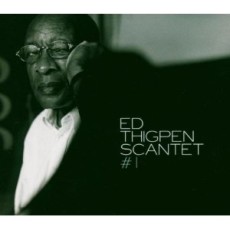
Daily Dose Of Jazz…
Edmund Leonard Thigpen was born on December 28, 1930 in Chicago, Illinois but was raised in Los Angeles, California where he attended the same high school, Thomas Jefferson, as fellow jazz greats Dexter Gordon, Art Farmer and Chico Hamilton. He majored in sociology at Los Angeles City College, left for East St. Louis to pursue music while living with his father, also a drummer, who played with Andy Kirk’s Clouds of Joy.
Ed first worked professionally in New York City with the Cootie Williams orchestra in 1951 at the Savoy Ballroom, during this decade he played with musicians such as Dinah Washington, Gil Melle, Oscar Pettiford, Eddie Vinson, Paul Quinichette, Charlie Rouse, Lennie Tristano, Jutta Hipp, Johnny Hodges, Dorothy Ashby, Bud Powell and Billy Taylor.
In 1959 he replaced guitarist Herb Ellis in the Oscar Peterson Trio in Toronto, Canada, recorded with Teddy Edwards-Howard McGhee in 1961, led his own 1966 session “Out of the Storm” for Verve, and went on tour with Ella Fitzgerald for five years beginning in 1967.
A move to Copenhagen in 1974 saw Thigpen collaborating with several other American expatriate jazz musicians who over the past two decades had settled in the city such as Kenny Drew, Ernie Wilkins, Thad Jones, along with native Danes Mads Vinding, Niels-Henning Orsted Pederson, Alex Riel and Sven Asmussen. He also worked with visiting musicians Clark Terry, Eddie “Lockjaw” Davis, Milt Jackson and Monty Alexander.
Ed Thigpen, a drummer with over 50 albums to his credit as a leader and sideman, passed away peacefully after a brief period in Copenhagen’s Hvidovre Hospital on January 13, 2010 at the age of 80.
More Posts: drums,percussion
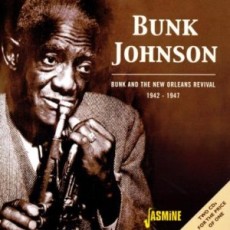
Daily Dose Of Jazz…
Willie Gary “Bunk” Johnson was born December 27, 1879 although there is some speculation surrounding his birth year as 1889. He received lessons from Adam Olivier, began playing professionally in Olivier’s orchestra and spent some adolescent years occasionally playing with Buddy Bolden’s band.
During the decade 1905-1915 Bunk was regarded as one of the top trumpeters in New Orleans in between repeatedly leaving to tour with minstrel shows and circus bands. In 1931 he lost his trumpet and front teeth when a violent fight broke out at a dance that put an end to his playing. He thereafter worked in manual labor, occasionally giving music lessons on the side when he could.
The later years of the thirties saw writers researching jazz history and trading letters with Johnson in which he stated he could play again if he had new teeth and trumpet. Writers and musicians took up a subsequent collection and got his new dentures via Sidney Bechet’s dentist brother, a new horn and made his first recording in 1942.
This propelled Bunk into public attention, attracting a cult following and he played New Orleans, San Francisco, Boston and New York City. His work in the 1940s show why he was well regarded by his fellow musicians—on his best days playing with great imagination, subtlety and beauty. Earlier fame eluded him for he was unpredictable, temperamental, with a passive-aggressive streak and a fondness for drinking alcohol to the point of serious impairment. In 1948, jazz trumpeter Bunk Johnson suffered from a stroke and died the following year in New Iberia on July 7, 1949.
More Posts: trumpet
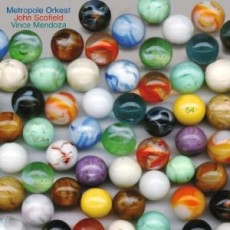
Daily Dose Of Jazz…
John Scofield was born on December 26, 1951 in Dayton, Ohio but early in his life the family moved to Wilton, Connecticut and it was here that he discovered his interest in music. He attended Berklee College of Music but left to record with Chet Baker and Gerry Mulligan followed by joining the Billy Cobham/George Duke Band touring and recording for two years.
Affectionately known as “Sco”, he went on to record with Charles Mingus, replace Pat Metheny in Gary Burton’s band and in 1976 signed with Enja Records releasing his first album “John Scofield” the next year. He formed his own band with Steve Swallow and Adam Nussbaum in ’70 and joined Miles Davis for three and half years in 1982. Leaving Miles he formed the Blue Matter Band and released three albums, in the nineties he put together a quartet that included Joe Lovano, Charlie Haden and Jack DeJohnette and recorded several albums for Blue Note. Towards the end of his tenure with Blue Note, Scofield returned to a more funk and soul jazz-oriented sound, a direction that has dominated much of his subsequent output to the present.
Scofield has played and collaborated with Joe Henderson, Joey DeFrancesco, Herbie Hancock, Pat Metheny, Bill Frisell, Pat Martino, Mavis Staples, Medeski, Martin & Wood, Jaco Pastorious, John Mayer, Hal Galper and the Metropole Orchestra along with many other well-known artists.
Guitarist John Scofield is at ease in the bebop idiom as well as he is versed in Jazz-fusion, funk, blues, soul, rock and other forms of modern American music and currently is an adjunct professor at NYU’s Steinhardt School of Education.
More Posts: guitar
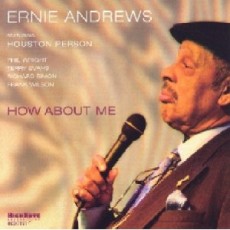
Daily Dose Of Jazz…
Ernie Andrews was born on December 25, 1927 in Philadelphia, Pennsylvania and spent his earliest years singing in his mother’s church. When he was becoming teen age his family move to Los Angeles, California where he studied drums and continued singing at Jefferson High School. His early influences included Ella Fitzgerald, Billy Eckstine, Al Hibbler, Johnny Mercer, Jimmy Rushing and “Big” Joe Turner.
Discovered by songwriter Joe Greene in 1947 when he won an amateur contest at Central Avenue’s Lincoln Theatre, Ernie was taken into the studio and recorded him at the ripe age of 17.The hit “Soothe Me” sold 300,000 copies and Andrews became a singer to be reckoned with. His next big hit came with Benny Carter called “Make Me A Present Of You” and by this time he was not only working at home but also touring playing clubs, after-hours rooms and concerts.
By 1959, Andrews had joined Harry James’ band, touring the U.S. and South America for nine years, which time he considers his most valuable learning experience. In 1967, he recorded the jazz classic “Big City” with Cannonball Adderley on Capital Records, rejoined James in 68, based himself in Baltimore in ’69, began a solo career and had another big hit with “Bridge Over Troubled Waters”. Her returned to Los Angeles in 1974 where he has resided for more than 50 years.
He has the ear to improvise and a rich resonant voice, and plays his vocal chords as a musician plays his horn. With his special strut, unique mannerisms and a performance that portrays the gamut of emotional experience, he consistently moves audiences to standing ovations. Vocalist Ernie Andrews continued to play clubs, concerts and jazz festivals throughout the world, often performing in Las Vegas, until his transition on February 21, 2022, at the age of 94.
More Posts: vocal



